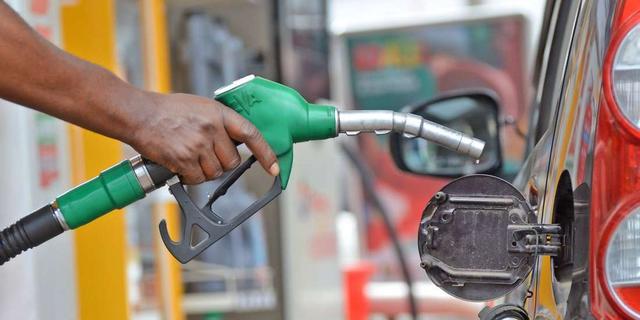
By Theodor Opara
So much is happening in the automobile industry across the world today that people couldn’t have thought possible a few decades ago. The popular saying that there is no re-inventing the wheel may soon be re-coined, given the rate at which innovations are coming up in the auto sector and the constant change. For instance, how do you describe today’s car that can swim in water without getting stuck or cars that can fly? What about autonomous cars that are self-driven? All these are happening before our very eyes.
Today’s cars offer luxury and more car makers are venturing into the luxury segment thereby offering luxury as standard , unlike in those days when you could count the number of luxury car makers on your finger tips. Even the smallest car makers now offer some level of luxury, at least in their flagship segment.
There was a time that luxury cars were only made by European and American manufacturers but today the Japanese, Koreans and Chinese are sharing the market with the Europeans and Americans in this category. Having realized the importance of automobile production in an economy, many countries are investing in the sector which has a sure reward within a short period of time. It is on record that there is hardly any country with a sound economy that does not have a thriving auto industry.
Automobiles are manufactured in different countries by different companies, but the major challenge facing all of them is how the automobiles can be powered with cheaper energy and will at the same time be safe to the environment. Generally, automobile makers are working to find alternatives to diesel and petrol in powering their automobiles that will be affordable and environmentally friendly too. For these reasons auto makers are looking at various sources of energy for powering their automobiles to urgently replace the established sources. Though, according to investigation, it would be impossible to completely achieve that given the drawbacks associated with the new sources of power.
Compressed Natural Gas
In Nigeria, the most targeted is the Compressed Natural Gas, CNG, for which the federal government is committing a lot of financial resources towards its achievement. Apart from being a cheap source of energy in Nigeria, the CNG is a more environmentally friendly deposit because it emits low pollution, and at the same time more economical to refill.
So far, the presidential Initiative on CNG said that over N450million has been invested in conversion, refueling, and training of technicians while over one million vehicles have been converted. It is also estimated that conversion from petrol to CNG could cost as much as N1.5million per vehicle.
Electric Vehicle
The major source of power to automobiles worldwide apart from petrol and diesel is the Electric Vehicle, EV which is gaining momentum like wildfire. It is currently the most prominent alternative to fossil fuels, even as automakers are heavily investing in battery technology, developing longer-range EVs, and building charging infrastructure.
At the end of 2023 it was estimated that 42 million vehicles are powered by electricity and more than half of these vehicles are registered in China, ahead of the United States with 4.8million electric cars, while Germany occupies the third spot.
At the end of 2022 about 26 million electric cars were registered across the globe representing 60 percent uptake from 2021. Lithium-ion batteries are undoubtedly the dominant technology, but research is ongoing for more efficient and sustainable battery technology.
Hydrogen-powered vehicles
Apart from petrol, diesel, and Electric Vehicles, hydrogen power is also making waves in Europe, Japan and Korea. The hydrogen source of power for automobiles has been described as a new game-changer and known automobile makers are turning to the energy source as an alternative to the others. Japan’s Kawasaki has unveiled some motorcycle models to be powered by hydrogen.
The new Kawasaki bike known as Ninja H2 HYSE is a radical motorcycle that merges hydrogen fuel cell technology with electric motors to create a hybrid super bike capable of delivering high performance and Eco-friendly operation. Recently, Toyota Motor Corporation unveiled a major partnership to develop hydrogen refueling stations across Europe which could see motorists fill up in just a few minutes.
Toyota Motor Europe partnered with Hydrogen Refueling Solutions (HRS) and ENGIE to deploy the next-generation hydrogen refueling system across Europe. The agreement aims to introduce a faster and more cost-efficient hydrogen refueling infrastructure across the continent for more Zero emission vehicles. The innovation solution will be piloted through an EU-funded project called RheaDHY, focusing on accelerated infrastructure deployment.
As at the beginning of 2023, it was estimated that more than 70,000 vehicles were powered by hydrotechnology of which 80 percent were passenger cars, 11 percent were buses and nine percent were trucks. The global hydrogen vehicle market size is projected to grow from $12.7billion in 2024 to $142.15 billion in 2030.
Water Engines
Auto makers are also turning to water engines as another solution to the environment. A water engine according to experts is a record no one expected but everyone wants. In fact it does not reject hydrogen altogether but uses it to its advantage.
The Austrian Company AVL Racetech has developed a powerful hydrogen combustion engine, an invention that demonstrates that this type of model can boast high performance and can be used as an alternative to electric vehicles.
In addition, it has appeared as a result of the union of engineers from AVL Racetech and HUMDA laboratory in Hungary. Its innovative hydrogen combustion engine has a new feature that makes it special which is a water injection system and with this addition, the power traditionally associated with this type of engine is solved.
Hydrogen fuel cell vehicles (FCEVs) create power using hydrogen. Their only emission is water vapour. Car companies are studying FCEVs for lorries and buses which are larger vehicles that need to travel long distances and refuel quickly. Creating hydrogen filling stations is a key challenge, so fuel cell technology remains expensive.
The part fuel injection, PFI, inserts traditional water into the engine’s air intake system which prevents premature ignition that could damage the part and achieves Stoichiometric combustion. Translated, this means that the resulting proportions of air and fuel are more or less fixed.
This, the company explains, highlights the potential disadvantages of a lean burn engine. The result of this extensive work has been a two-litre hydrogen engine that produces 410 horsepower and 500 Newton-meters of torque between 3,000 and 4,000 revolutions per minute, achieving specific power density of approximately 205 horsepower per litre, 150kw per litre.
Solar-powered vehicles
Solar-powered vehicles are also being developed. Car manufacturers are beginning to add solar panels to cars to charge the battery. But, the technology has severe limitations as it needs a lot of sunlight and must be more efficient.
E-fuels
Synthetic fuels, or e-fuels, are also being explored. They are made using captured carbon dioxide. It also includes hydrogen from renewable electricity. E-fuels could allow continuous use of petrol engines and would also greatly cut carbon emissions.
The bottom line is that the automotive industry is in a period of significant transformation, driven by the need to reduce greenhouse gas emissions and find alternatives to traditional fossil fuels. Global governments are already setting tougher rules on emissions and automakers are switching to cleaner tech because of this.
The interest in EVs, battery and fuel cell technology are improving fast and will continue to improve. There are great challenges of course, it is a big job building alternatives. Nevertheless, the car industry is changing, moving steadily to alternative energy, mainly EVs.
The post How automakers are moving beyond petrol appeared first on Vanguard News.









6wgtvb